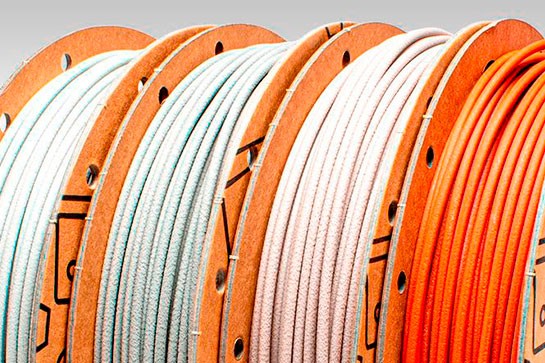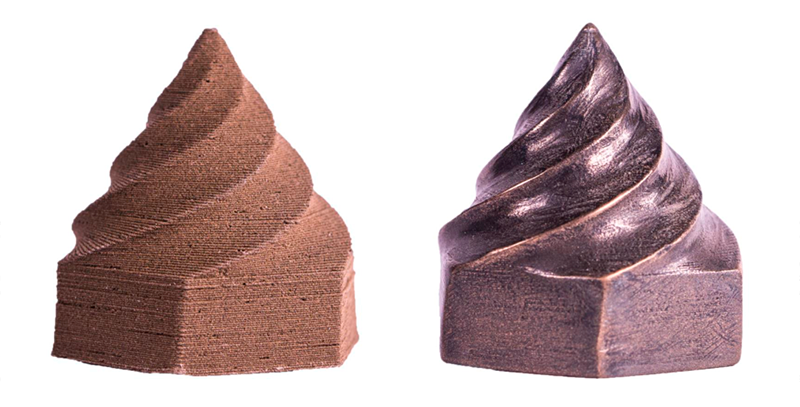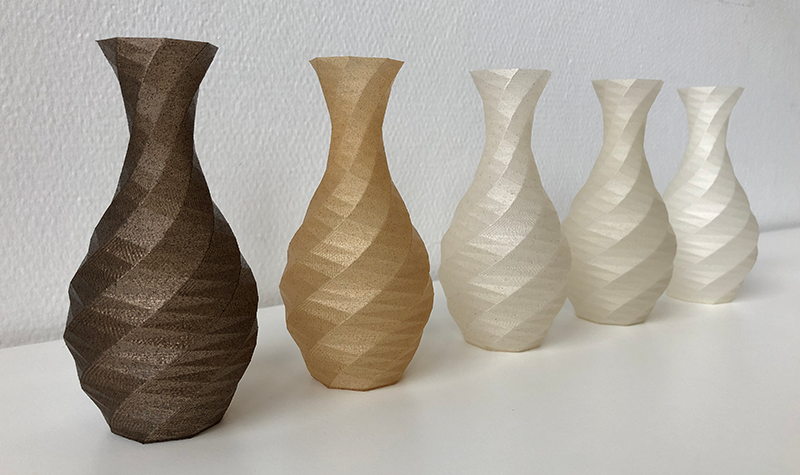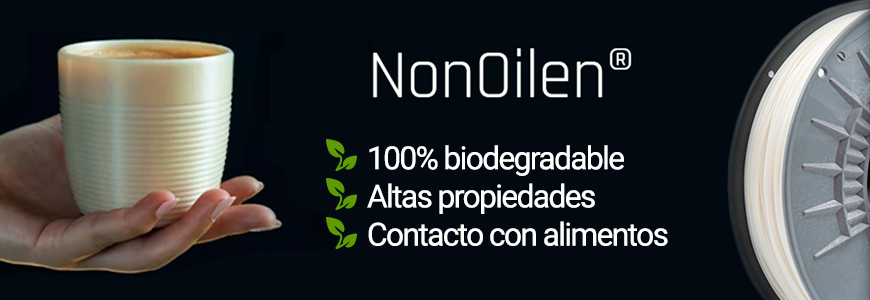
Today, more and more users are enjoying the benefits of additive manufacturing. Developments in this field are not only affecting 3D printers, but filament manufacturers are increasingly focusing on the production of innovative and original materials in order to stand out in the market and offer alternative solutions to standard plastics (PLA, ABS, PETG, etc.).
To classify alternative materials for FDM 3D printing, at least two types can be distinguished:
- Filaments that offer specific properties or characteristics that are difficult to find in standard filaments.
- Filaments that offer an original appearance or finish to parts 3D printed with that material.
Most of these filaments are composed of a base polymer (which is usually a standard plastic) combined with other materials, such as fibres, powder, etc.
In this article we wanted to make a compilation of 5 of the most innovative and original alternative filaments on the market today. All of them can be used with almost any FDM 3D printer, even the most basic ones, since the base polymer used is mostly PLA.
1. Metallic filaments
FDM 3D printing filaments with metallic finishes have been available for some time. These filaments are usually composed of PLA and a small amount of metallic powder, which means that 3D printed parts with this material can be sanded and polished, resulting in a metallic-looking finish.
However, filament manufacturers such as The Virtual Foundry have gone a step further, offering PLA-based filaments with a high metal powder content. Parts printed with these materials can undergo a sintering process, achieving fully metallic parts through FDM 3D printing, something unimaginable until now.

Image 1: 3D printed part with Filamet Copper and part after sintering. Source: The Virtual Foundry.
The Virtual Foundry's Filamet metal filaments include Copper filament, 316L Stainless Steel filament, Tungsten filament, Inconel filament and more.
2. Conductive flexible filaments
Some PLA-based filaments with conductive properties are available on the market, such as Proto-Pasta's conductive PLA filament.
Finding conductive filaments that also have other properties such as flexibility is much more complicated, but possible thanks to Recreus, which has recently launched its new material: Filaflex Conductive.
Video 1: How the Filaflex Conductive filament works. Source: Recreus.
Filaflex Conductive is a 92A Shore hardness TPU filament with excellent mechanical properties, easy printability, and conductive properties. Thus, it is a very useful material for the development of Wearable electronics devices, although it has many other possible applications. Undoubtedly, an innovative material with a lot of possibilities.
3. Compostable filaments with high properties
There is no doubt that the development of 3D printing materials has come a long way towards sustainability and the search for a lower environmental impact.
Until now, one of the most sustainable options in FDM 3D printing was PLA, a biodegradable polymer obtained from natural resources, made from starch extracted from corn, sugar beet or wheat. PLA has good mechanical properties, but has a fairly low softening temperature, which makes it unsuitable for some applications.
This is where NonOilen, the latest launch of the renowned filament manufacturer Fillamentum, is born. NonOilen stands out for its good mechanical properties, similar to those of PE, PP or Nylon, as well as for being suitable for food contact and dishwasher safe.
Image 2: Piece printed with NonOilen and properties. Source: Filament2print.
4. Biocomposite filaments
Several filament manufacturers have opted for the development of PLA-based filaments filled with particles from the reuse, recycling or disposal of various organic materials.
This is the case of Francofil, with its Oyster, Scallop, Mussel, Wheat or Coffee filaments; or 3D Fuel with its Wound Up (coffee), Entwined (hemp), or Buzzed (beer) filaments. All these filaments offer an alternative to other petroleum-derived materials, producing a lower environmental impact. In addition, they are committed to the circular economy, using local raw materials for the manufacture of the filaments.

Image 3: Parts printed with biocomposite filaments from Francofil. Source: Francofil.
The use of these materials provides a rustic finish to 3D printed parts, in some cases even with a certain texture, helping to hide the layers produced by 3D printing with FDM technology.
5. Filaments with stone particles
Wood filaments are well known to all FDM 3D printer users due to the originality of the filaments and the finishes they offer, which are very similar to natural wood.

Image 4: Stonefil filaments. Source: Formfutura.
In the same line, Formfutura has developed Stonefil stone particle filaments, which contain a filling of approximately 50% stone particles. These filaments offer a very striking rough and matt finish, similar to natural stone, and are available in different colours. In addition, as with wood filaments, different shades can be achieved by varying the extrusion temperature. Without a doubt, these filaments are ideal for the manufacture of decorative elements, as well as for the 3D printing of architectural models.
This is just a small example of some of the most innovative materials available for FDM 3D printing, as there is now a wide range of materials to suit the needs of every user and every application.













